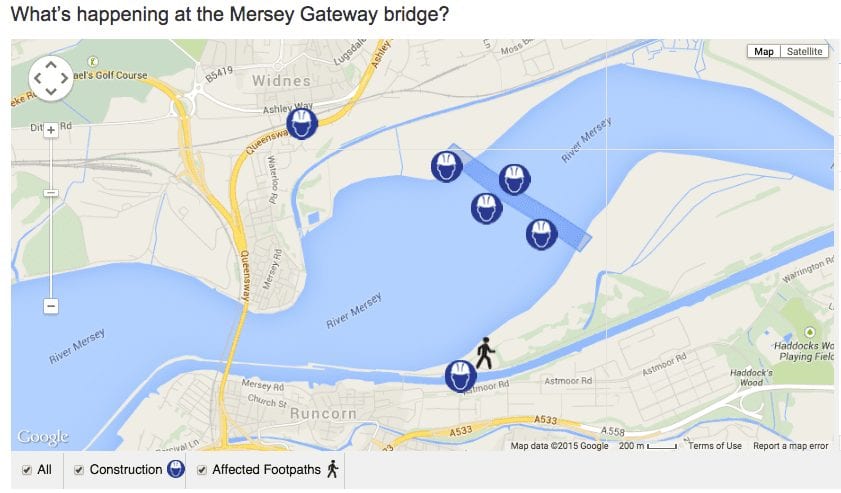Providing solutions outside the traditional PR toolbox is a fun and exciting way to broaden horizons. One of the recent projects I’ve worked on uses interactive mapping technology to keep people up-to-date about road and construction work in their area, and about how it might affect their daily journeys.
By blending traditional skills of communication with new technologies available to us on the web, we have helped our client meet the needs of an increasingly tech-savvy populace, more used to navigating with a smartphone than a road map.
The project in question is the Mersey Gateway bridge. A £2 billion landmark piece of infrastructure spanning the River Mersey. Work on the bridge affects the whole area of Halton Borough Council, and tens of thousands of residents, commuters and road users. It’s a massive project, with work across multiple sites, and with hundreds of people involved.
Using a custom Zeemaps overlay that works with Google Maps, we developed the ‘Down Your Street’ tool. It allows people to navigate at a street-by-street level to see how their daily journeys could be affected by project work. The tool is readily available on the project’s website, and works across mobile devices.
The interactive map is highly visual, simple to use and is broken up into nine main project sections. Visitors can click through each section to find out about construction work, road works, road closures, footpath diversions and tree clearance work.
Each map is illustrated with graphics of the work going on within that section, and visitors can select these to bring up even more information about what’s happening. The map is updated daily and provides our client, Merseylink, with an agile solution to provide people with information to help their day-to-day journeys.
The system is flexible and allows us to add information as and when we need to. Of course, to complement Down Your Street, we still provide information on road works to the public through traditional channels, such as press releases.
Ultimately, blending new tech, with tried and tested communication methods results in the end user – in this case the people who use the interactive tool – having a wealth of information at their fingertips.
